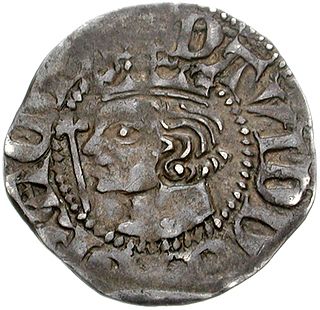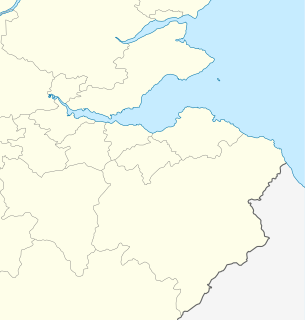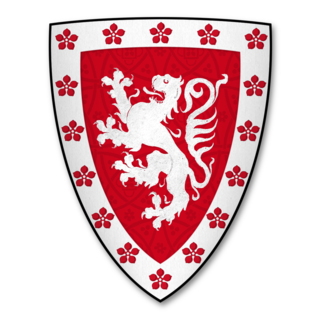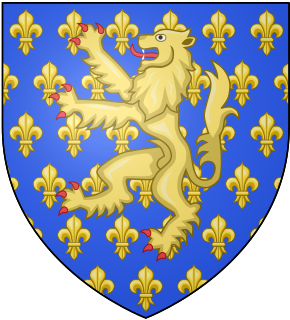| |||||
| Centuries: | |||||
|---|---|---|---|---|---|
| Decades: | |||||
| See also: | List of years in Scotland Timeline of Scottish history 1332 in: England • Elsewhere | ||||
Events from the year 1332 in the Kingdom of Scotland .
| |||||
| Centuries: | |||||
|---|---|---|---|---|---|
| Decades: | |||||
| See also: | List of years in Scotland Timeline of Scottish history 1332 in: England • Elsewhere | ||||
Events from the year 1332 in the Kingdom of Scotland .
The 1330s was a decade of the Julian Calendar which began on January 1, 1330, and ended on December 31, 1339.
Year 1332 (MCCCXXXII) was a leap year starting on Wednesday of the Julian calendar.

The Wars of Scottish Independence were a series of military campaigns fought between the Kingdom of Scotland and the Kingdom of England in the late 13th and early 14th centuries.

David II was King of Scotland for nearly 42 years, from 1329 until his death in 1371. He was the last male of the House of Bruce. Although David spent long periods in exile or captivity, he managed to ensure the survival of his kingdom and left the Scottish monarchy in a strong position.

The Battle of Dupplin Moor was fought between supporters of King David II of Scotland, the son of King Robert Bruce, and English-backed invaders supporting Edward Balliol, son of King John I of Scotland, on 11 August 1332. It took place a little to the south west of Perth, Scotland, when a Scottish force commanded by Donald, Earl of Mar, estimated to have been stronger than 15,000 and possibly as many as 40,000 men, attacked a largely English force of 1,500 commanded by Balliol and Henry Beaumont, Earl of Buchan. This was the first major battle of the Second War of Scottish Independence.
Domhnall II, Earl of Mar was briefly Regent of Scotland during the minority of David II, King of Scotland.

Patrick de Dunbar, 9th Earl of March, was a prominent Scottish magnate during the reigns of Robert the Bruce and David II.
Thomas Randolph, Earl of Moray was a soldier and diplomat in the Wars of Scottish Independence, who later served as regent of Scotland. He was a nephew of Robert the Bruce, who created him as the first earl of Moray. He was known for successfully capturing Edinburgh Castle from the English, and he was one of the signatories of the Declaration of Arbroath.
Thomas Randolph, 2nd Earl of Moray, a Scottish military commander, held his title for just 23 days.

John Randolph, 3rd Earl of Moray was an important figure in the reign of David II of Scotland, and was for a time joint Regent of Scotland.

Henry de Beaumont, jure uxoris 4th Earl of Buchan and suo jure 1st Baron Beaumont, was a key figure in the Anglo-Scots wars of the thirteenth and fourteenth centuries, known as the Wars of Scottish Independence.
The Battle of Boroughmuir was fought on 30 July 1335 between Guy, Count of Namur, a cousin of Queen Philippa of England, and John Randolph, 3rd Earl of Moray and Guardian of Scotland. Namur was on his way to join Edward III on his invasion of Scotland, when he was intercepted on the common grazing ground to the south of Edinburgh - the Borough Muir. The fighting continued into the city itself, and concluded in a desperate struggle in the ruins of the old castle. Randolph was victorious in a fight which forms a small part of the Second War of Scottish Independence.
Events from the 1330s in England.
Sir Robert Bruce, Lord of Liddesdale was an illegitimate son of King Robert the Bruce and an unknown mother. He was knighted and awarded the royal arms at the Battle of Bannockburn in 1314.
David of Strathbogie was a 14th-century Anglo-Scottish noble. He was born the son and heir of Sir David II Strathbogie, Earl of Atholl, Constable of Scotland and Chief Warden of Northumberland, by his spouse Joan, elder daughter of Sir John Comyn of Badenoch, Joint Guardian of Scotland.
The Battle of Annan, also known in the sources as the Camisade of Annan, took place on 16 December 1332 at Annan, Dumfries and Galloway in Scotland.

Edward Balliol was a claimant to the Scottish throne during the Second War of Scottish Independence. With English help, he ruled parts of the kingdom from 1332 to 1356.
Sir Andrew Murray (1298–1338), also known as Sir Andrew Moray, or Sir Andrew de Moray, was a Scottish military and political leader who supported David II of Scotland against Edward Balliol and King Edward III of England during the so-called Second War of Scottish Independence. He held the lordships of Avoch and Petty in north Scotland, and Bothwell in west-central Scotland. In 1326 he married Christina Bruce, a sister of King Robert I of Scotland. Murray was twice chosen as Guardian of Scotland, first in 1332, and again from 1335 on his return to Scotland after his release from captivity in England. He held the guardianship until his death in 1338.

The Battle of Kinghorn was fought on 6 August 1332 at Wester Kinghorn, Fife, Scotland. An invading seaborne force of 1,500 men was commanded by Edward Balliol and Henry Beaumont, Earl of Buchan. A Scottish army, possibly 4,000 strong, commanded by Duncan, Earl of Fife, and Robert Bruce, Lord of Liddesdale was defeated with heavy loss. Balliol was the son of King John Balliol and was attempting to make good his claim to be the rightful king of Scotland. He hoped that many of the Scots would desert to him.
The following outline is provided as an overview of and topical guide to the Wars of Scottish Independence: